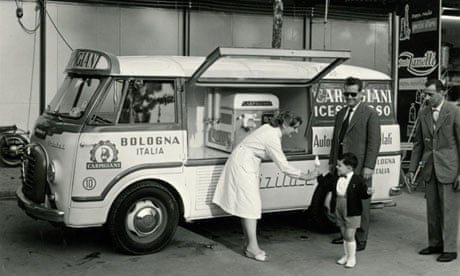A new museum outside Bologna charts the rise of gelato – Italian ice-cream – from its early incarnation as a chilled delicacy for Roman emperors to the sweet treat seen on every corner of Italy – and offers to make every visitor an artisan.
The €1.5m ice-cream museum opens its doors tomorrow at the headquarters of Carpigiani, a gelato machine maker founded in Bologna in 1946 which now sells its treats in more than 100 countries.
The free museum is located in a modern exhibition space seven miles outside of the city in the municipality of Anzola dell'Emilia.
"The Foundation has created the first museum in the world that describes the complete history, culture and knowledge of gelato," says Valentina Righi, vice president of the Bruto and Poerio Carpigiani Foundation, financier of the museum. By sending tourists home with an appreciation of the history, Righi hopes "to spread the gelato culture everywhere in the world".
A tour through the museum is an animated affair, with an English-speaking guide on hand to take visitors through the 11th-century Arab pomegranate sorbet recipe and on to the birth of gelato in Italy 500 years later. Here its roots are traced to the House of Medici; a family famed in Florence for its political grip and production of popes. Luciana Polliotti, the museum's historical curator, says gelato as we know it today was invented by Cosimo Ruggieri, alchemist and astrologer to Caterina de' Medici in the 16th century.
The simple pleasure was reserved for the well-to-do until the "democratisation" of gelato in the 20th century, the focus period of the museum.
Throughout there are screens showing video interviews with aged Italians discussing the rise of gelato during their lifetime. Luca Caviezel is one; an 86-year-old Sicilian expert who, describes how "the artisan gelato in the last 30 years has become a real science".
Other exhibits include a wall covered in an array of rainbow-coloured boxes, used to transport the cones to gelaterias in different Italian cities, and an original cone-making machine.
Carpigiani's collection also boasts thousands of images from around the world, the best of which are on display and depict everything from Italian advertising campaigns to children queuing for Mr Whippy in 1960s England. The museum is keen to point out, however, that gelato is distinct from British ice-cream, which has a higher fat content as it uses more cream.
The hour-long tour concludes in the tasting area, where instructors from the university make modern versions of 19th-century recipes: strawberry and raspberry sorbet from 1822 and coffee sorbet first formulated in 1854. For €3 visitors can taste different types of gelato, including sorbets, fruit gelato, soft gelato and traditional creams.
You can even take a short lesson in the university's laboratory and make your own artisan gelato for €10. Or a more intensive four-hour, €50 experience involves a full theory lesson in gelato making, hands-on production and tasting. From there the gelaterias of Bologna await.

Comments (…)
Sign in or create your Guardian account to join the discussion